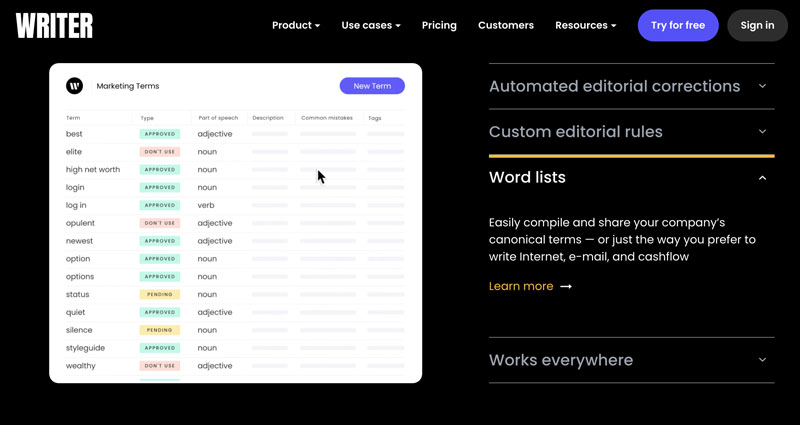When you master the process of content reporting, you’ll never have to fear those C-suite meetings where they ask you to justify their investment in your content operation. To avoid the dreaded eyerolls — as a recent moz.com post points out — simply follow a few tried-and-true steps to communicate the real value of their investment in a language your corporate leadership will understand.
Here’s how.
Align Your Content Marketing Goals with Your Corporate Objectives
First, lay the groundwork for a successful presentation by aligning your content goals with those of your company’s leaders.
Do they want to enter new markets? Then audience growth among your new target market segments needs to be a top priority.
Is their goal to increase revenue by a given percentage? Then it’s in your department’s best interest to prioritize conversions at every stage along the buyer’s journey.
Then, use a content analytics solution that integrates with your sales and other corporate analytics platforms to measure the metrics that will indicate whether your content is on track to achieve your goals.
Address Each Executive’s Concerns with an Account-Based Strategy
In account-based marketing, you research the concerns of specific decision-makers. Then, you create content that addresses those concerns.
Take the same approach when you meet with your company’s executives. Meet with them early in the reporting period to learn what facts and figures they care about.
Think of your executives as if they were your clients — and you’re their agency. Then, tailor your content, your analytics strategy, and your presentation to their “I want” lists.
Create a Content Plan That Ticks Every Box
After you align your goals with your company’s overall strategy and each stakeholder’s expectations, plan content that will help you achieve those goals. While you know the data they want to see, you need a plan that will help you get there.
The components of content marketing — words and images — are in your comfort zone. If you could identify the patterns of words and images that exert more influence on your prospects, it could simplify the content planning process to include more content that contains those patterns.
Start with a content audit to identify your best and worst performers. Within your content audit results lies the secret to identifying those patterns, as I talked about in a recent post.
Use Content Analysis Software to Tease Out Effective Components
As Accent Technologies’ Greg Richards advises, your reports need to determine how effective your content is. The data you present must be “actionable, insightful, and easily interpretable,” he points out.
Furthermore, he says, you need to present these reports in their proper context — and cover all the KPIs that your company’s leadership determines are critical for success.
By measuring the effectiveness of specific components in both your best and worst performers, you can bypass the guesswork and discover what ingredients drive your audience to engage and convert. Conducting a content analysis can do just that.
By limiting the variables — such as topic, buyer’s journey stage, and segment — you can identify the components that go into your best-performing (and worst-performing) pieces by using content analysis software. To use this software, you’ll need to categorize the content units you want to measure, such as:
- Keywords and close synonyms
- Images and infographics
- Videos
- Word count
- Types of channels you posted the content on
- Calls to action and “power words”
- Focus of each post (informative, promotional, or problem-solving)
To take the best advantage of your content analysis software, you’ll need to channel your inner geek and choose the coding rules you’ll use to include an item in each category you need to measure. Then, import the content to your content analysis program and let it do the legwork.
Next, Revise Your Poor Performers to Include Better Ingredients
Just like every top-rated chef knows, the difference between world-class and “meh” is all in the ingredients. After you’ve identified the factors that make a piece of content achieve your C-suite’s stated goals, you can tweak your poorly performing content to include a good bit of your winning content’s key ingredients.
Meet with Your Creative Teams to Update Content Guidelines
Once you’ve identified those elements that set a piece of content on the road to success, report your findings to your creative teams. Provide them with guidelines that encourage them to include those elements in the content they produce going forward.
If your content operations teams have access to an AI-powered content creation and governance platform, you can include those elements in your editorial guidelines and word lists. Doing so will ensure that your content will be internally coherent while achieving the goals that will make your C-suite happy campers.
Screenshot via Writer.com
Finally, Prepare for Your Next C-Suite Meeting
Now that your content is up to par in meeting your executives’ expectations, get ready to shine during your next meeting with the company brass. First, give a concise account of how you’ve revised your content to achieve all the goals your bosses have laid out for you.
Next, point out how and why your content has achieved those goals – and outline your strategy for future content. It’s time to dump the “data dump” and get into the details of the “why” behind those numbers.
However, make sure you speak from a perspective that your executives can relate to. Think of it as a marketing presentation – as if your C-suite were executives in a company you’re trying to win over to your brand. When you tailor your approach to their interests, you’re more likely to succeed.
Avoid Marketing Buzzwords
Too often, as the moz.com post that we cited earlier suggests, CMOs and other marketing leaders use their departmental buzzwords when trying to persuade their company’s C-suite. Is there any wonder why the eyerolls start?
While executives certainly understand numbers, they don’t understand “the nuances of traffic, visits, [and] engagement metrics.” For that reason, content marketing leaders need to explain how these numbers translate into reaching your company’s goals.
We’re good at writing blog posts and producing videos that kvetch about departmental silos — and how critical it is to lose the siloed mentality. But we go into corporate meetings with our own jargon tucked neatly into our briefcase. Lose it, and your presentations will double their effectiveness.
Walk a Mile in Their Shoes
Empathy is as critical in the boardroom as it is with your employer-employee relationship and your customer-vendor relationship. When you ask yourself beforehand what questions you would have if you were in their position, you’re more likely to explain your content’s performance in a way that answers those questions.
If your content hasn’t performed up to par, own up to it. However, your company leadership will want to know what you plan to do to remedy the situation. Use the insights you gleaned from your content analysis to provide them with the content strategy you plan to pursue in the future.
On the other hand, never miss an opportunity to make your C-suite look good when your content exceeds your expectations. Be sure to thank them for their support — let them share in your victories.
Above all, show them the impact your content teams’ hard work has made on the company’s bottom line. Ultimately, that’s every company’s highest goal.
Now, if your content marketing platform can integrate with your sales and marketing platforms, you can complete the picture, tying specific content campaigns — and even the components of the content you’ve published — to your sales teams’ results. DivvyHQ can do that — and a whole lot more.
With integrations that tie your marketing data to your sales teams’ data, a robust metadata solution that keeps track of all your relevant components, and an open API that allows your developers to integrate with other tools, you have everything you need to create compelling content reports on one centralized platform.
And, with Divvy’s white-glove, custom analytics solution, you can generate reports tailored to your company’s exact needs.
Don’t let your next meeting with the company brass loom large on your calendar. Request a DivvyHQ demo today to get a glimpse of what your content reporting could become.

